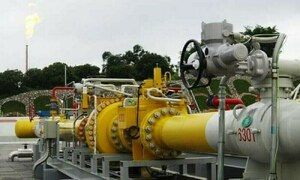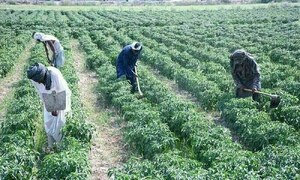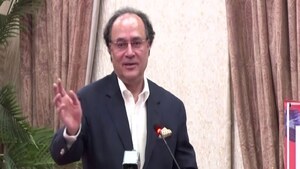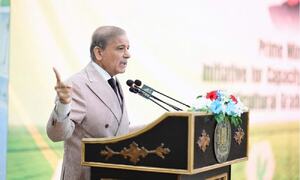The Sindh Abadgar Board in its meeting on Sunday said that water crisis in Sindh had attained alarming proportions, and expressed surprise that water rotation programme was continuing even during flood year. Abdul Majeed Nizamani presided over the meeting.
It observed that shortage of water at the tail-end in non-perennial areas had become a permanent feature, and protest demonstrations and sit-ins outside the local press clubs had become a matter of routine all 365 days of the year.
The meeting attributed the shortage of water to inefficiency of irrigation officials and rampant corruption. It urged Sindh Assembly members to raise pertinent questions on the floor of the assembly about how many direct outlets have been sanctioned and which minors were taken off from the main canals from 1947 to 1971, year-wise. It further said that it should also be disclosed whether these outlets and minors were sanctioned in accordance with Irrigation Act and what alternative arrangements had been made to supply water to lands which had been rendered barren.
It sought further clarification as to how much katcha land had been legally leased out and how much land had been cultivated illegally including the source of water supply. It also sought similar information about the past and present state of forests.
It demanded that release of water from Kotri Barrage should be ensured, latest by October 31, to save those crops which were cultivated late. In order to meet the impending sugar and wheat crises, the meeting demanded that according to Sugarcane Act, the sugar mills must start crushing season at the latest by October 31 in Sindh and by November 30 in Punjab. The price of sugarcane should be fixed with the joint consultation of the government, sugar mills and abadgars, keeping in view the principle of demand and supply in the world market, crop condition, cost of production and weather forecasts.
It proposed that a committee comprising research sugar technologists, sugar mills and abadgars should be constituted to find out ways and means for increasing per acre yield of the crop in minimum possible time with less use of water and more recovery of sucrose.
It said that funds to evolve new varieties of sugarcane for producing 63 million tons of crop for 74 functional mills of the country should be made available to this committee at the ratio of 75 percent from the road cess funds and a matching grant from the government.
It suggested that as long as 63 million tons sugarcane was not produced in the country to meet the total crushing capacity of 74 sugar mills, no new sugar mill should be sanctioned.
It cautioned that any new sugar mill would not only have adverse effect on most important crop of cotton and wheat, but the cane crop would require an additional 1.6 MAF water which would increase hatred between the federating units.
BR100
15,059
Decreased By
-56.5 (-0.37%)
BR30
42,931
Decreased By
-117.2 (-0.27%)
KSE100
148,815
Decreased By
-677.8 (-0.45%)
KSE30
45,206
Decreased By
-312 (-0.69%)





















Comments
Comments are closed.